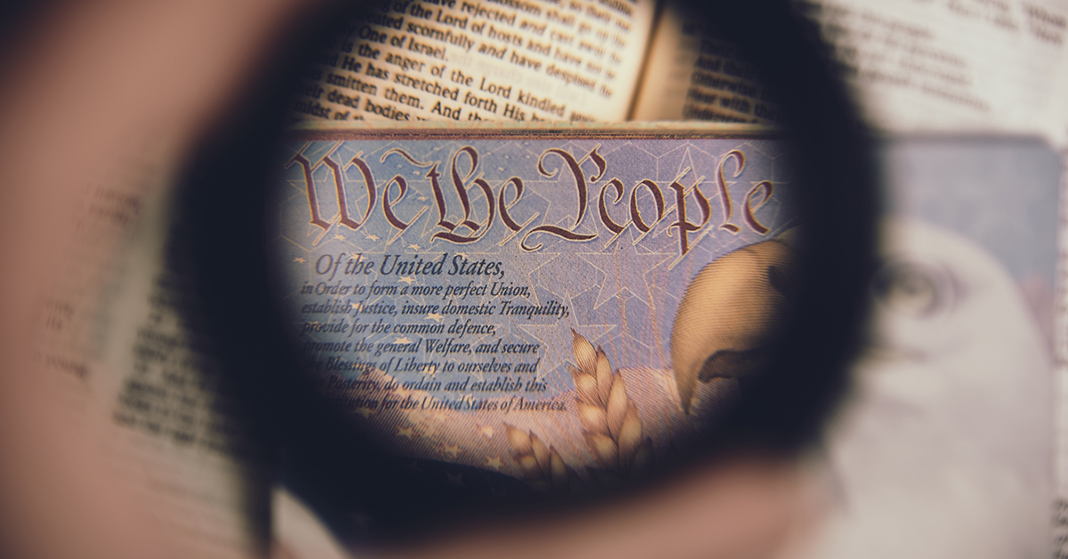
Recent surveys show that many Americans don’t know much about their own nation’s governing document. In our homeschool, one of our main objectives is to teach our children about the US Constitution. As believers, we want our children to exercise godly stewardship when it comes to voting (in the future). In order to help them understand the Constitution, we have decided to start early.
Framework
It’s important to provide children with an overview of the framework of the Constitution. A helpful place to begin is with the three branches our Constitution divides the duties of government into. Since our family is using BJU Press heritage studies textbooks, we introduce this concept in first grade. Every year, we repeat it—with more detail added each time. This might seem basic, but only one in four American adults can identify these branches, and even fewer can identify the duties of each. When children understand that the Constitution dictates who makes, enforces, and settles the laws, they have a solid working knowledge of what the it does.
If you’re wondering if your little ones are ready for something as big as the Constitution, remember that this is just an introduction. Also, you can teach them with hands-on-activities. I found that even our verbal learner was helped by doing an activity. You can read how we used Legos® to learn about the Constitution .
Narrative
One thing that often makes studying government documents dull is a narrow focus on the mechanics of governing. The learning is more engaging if you place the Constitution within a narrative context. The Constitution arose out of a certain set of historical events, such as Shays’ Rebellion. Studying the document within its historical context provides interest and understanding.
Narrative also helps us understand one especially critical part of the Constitution—the Bill of Rights. Throughout our history as a nation, various people, groups, and movements have attacked our liberties . For example, even our second president, John Adams, threatened our First Amendment right to free speech. Exploring these historical events can help children understand what their rights are under the Constitution and how they’ve often been threatened in the past.
Capstone
Even though we lay a framework and expand understanding, we need to pull it all together in a single course. When I was in high school, I joined another group of homeschool seniors and juniors for an in-depth study of American government. That class brought together the various threads of the Constitution I had learned through the American history I had studied over the years.
Teaching the Constitution enables our children to engage wisely. But if we try to pack it all into the final year of homeschooling, they’ll likely find it overwhelming and dull. Instead, we should attempt to give our children a foundation that they can build on all through the early years.